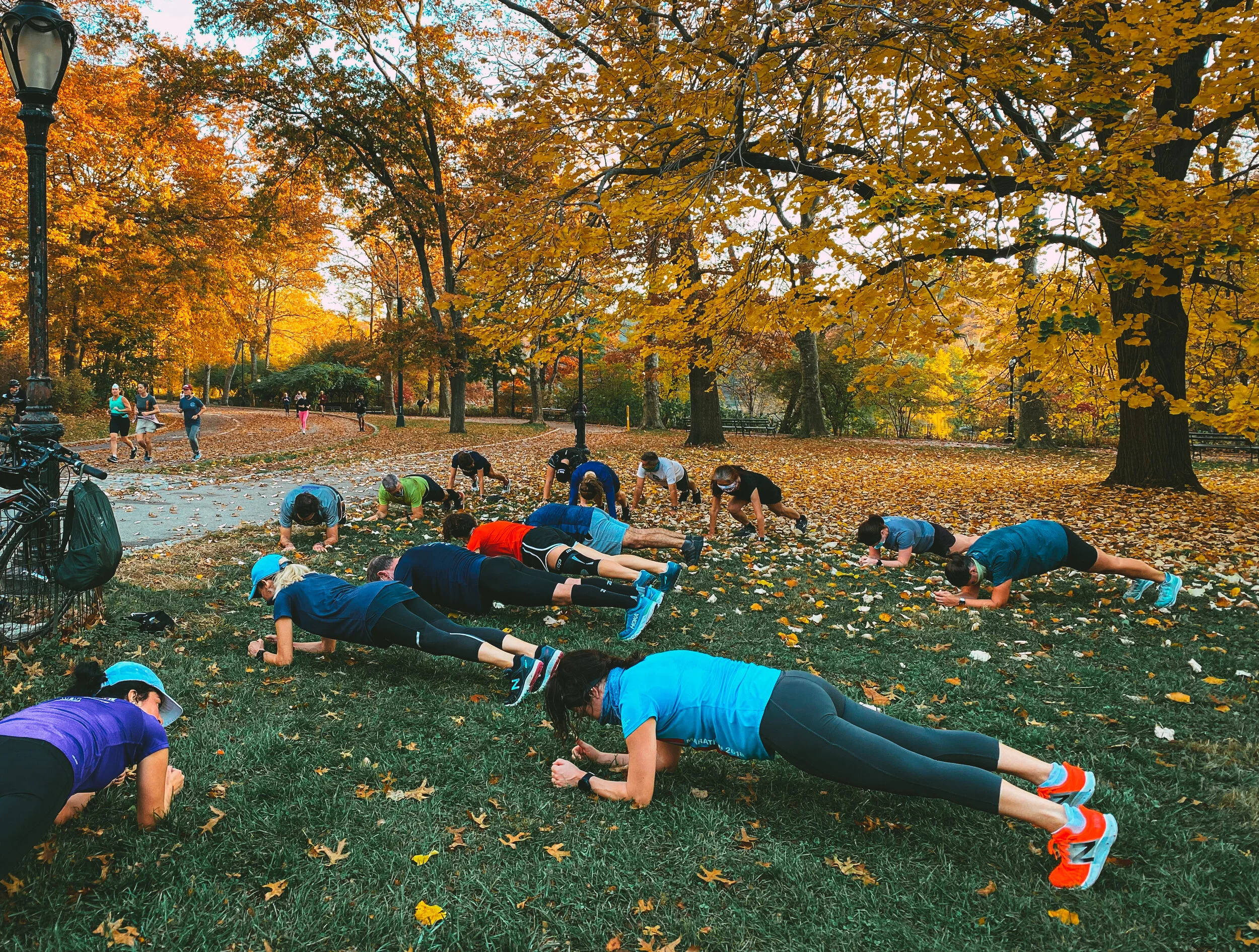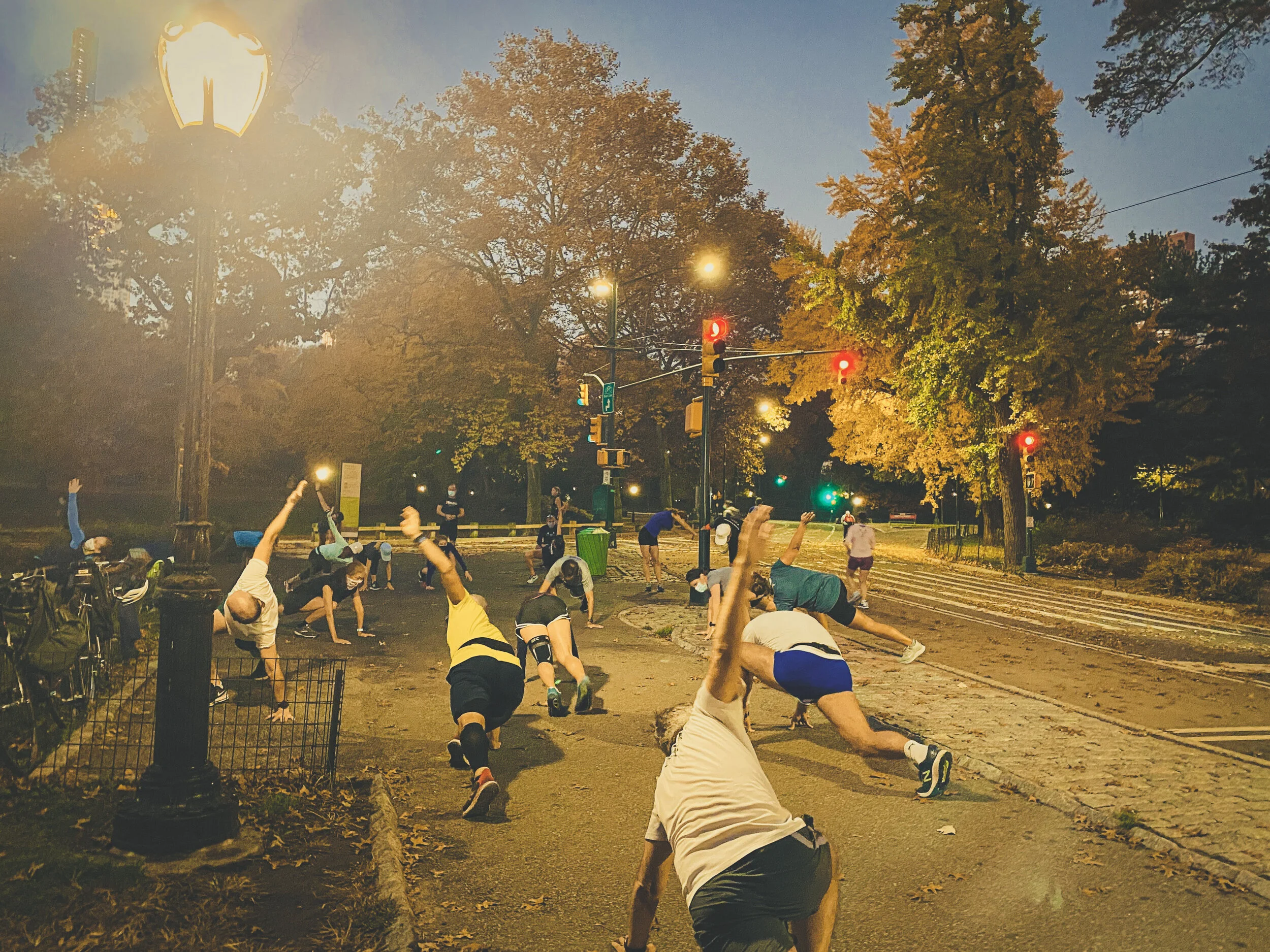
The Great Hill System
We don’t just run. We like to think that we give our members a thorough, multifaceted exercise session that builds strength, flexibility, balance, and relaxation skills, as well as the more expectable endurance, speed, and racing expertise. Before and after the central element of the session are auxiliary exercises that will prepare you for, augment, and sometimes help you try to forget that fast-running stuff:
The Warmup
Our hour-and-a-half format gives us time for a thorough warmup, which has several elements. First is an approximately five-minute dynamic-stretching session, which activates joints and muscles and thereby, in the immortal words of Coach Dara Frank, “gets the crunchiness out”—but without putting the strain on cold muscles that static stretching can. After that, we’ll jog approximately a mile, toward the end of which we’ll do a series of form drills. Each of these accentuates and exaggerates an aspect of good running form so as to ingrain it in your muscles’ memories. (The drills are also a bit more energetic than jogging and can warm you up faster.) Finally, we’ll run some “strides,” the universal but unimaginative term for brief, relaxed accelerations that accustom you to the speeds that you’ll be running in the workout. They’re about 50 to 75 meters long and alternate with jogs of the same length. After those, we’re ready for a speed workout, even if we’re starting in the early morning.
Strength, Flexibility, and Relaxation
After each workout, we reconvene for a five- to ten-minute strength-building segment to develop core and upper-body fitness and explode the myth of the weak, uncoordinated distance runner who had to join the cross country team because she was too “unathletic” for soccer or basketball. Our coaches, who have all disproved that stereotype, will experiment with making your muscles sore in a different way each week until you’re impervious to their attempts.
We then try to reward you for all of your hard work by giving you about five minutes of stretching and relaxation exercises, via which kinder, gentler members of the coaching staff try to assuage the discomfort just inflicted by their peers.
Speedwork
As the name suggests, speedwork is fast and designed to make you faster. There are many kinds of running that can be classified this way; our workouts employ "interval training"—short, fast runs interspersed with intervals of rest (usually slow jogging). The trick is to run at faster paces than you'll use in your races, but without racing. That's achieved by shortening the distances and giving you those recovery jogs between them. Becoming familiar with, say, 7:00-per-mile pace for several half-mile runs makes trying for 8:00-per-mile pace in a 5K much easier. Speedwork can be run on dirt, grass, a road, or a track, and sometimes it consists of running up a bunch of hills. (We have to live up to our name; we really do think hills are great.)
Tempo Runs
A tempo run is one in which you try to go a bit harder than your typical training pace, but which is still easier than racing. It’s a chance to build your aerobic capacity, practice your pacing skills, and work with training partners to disprove the “loneliness of the long-distance runner” rumor. (We believe in the friendliness of the long-distance runner.) Our tempo runs are usually between 30 and 40 minutes long, and we hope that their second halves are slightly faster than their first halves. (That's called "negative splitting," which is a good thing, like negative tests.) If you can gauge your effort on a 1-to-10 scale, we recommend running at an effort level of between 6 and 8 out of 10. Your coaches will run with different group members during the workout and give you tips on form, relaxation, effort, and other pertinent topics—positive feedback as well as advice.

“I love GHTC! The experienced, encouraging coaches, the 90-minute workouts, and above all the dedicated, supportive, fun community of runners make this group unique.”
— Glenn K.




